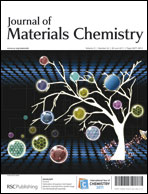Plasma functionalized PDMS microfluidic chips: towards point-of-care capture of circulating tumor cells
Abstract
The main challenge in the isolation of circulating tumor cells (CTCs) resides in their extreme rarity in blood. Here we report on the design of efficient and disposable microfluidic CTC capture devices based on the plasma functionalization of PDMS and its subsequent conjugation with the anti-epithelial-cell adhesion-molecule (EpCAM) mAb. Model studies on planar surfaces demonstrated excellent immuno-specificity of cancer-cell capture using NCI H69 small-cell lung cancer cells and SK-Br-3 breast cancer cells. Taking advantage of the transparency of the PDMS device, direct observation of the capture events on the internal 3D microstructure of the device could be achieved. At a flow rate of 16 μL min−1, an overall capture efficiency of 80 to 90% is determined in cell-spiking experiments in


 Please wait while we load your content...
Please wait while we load your content...